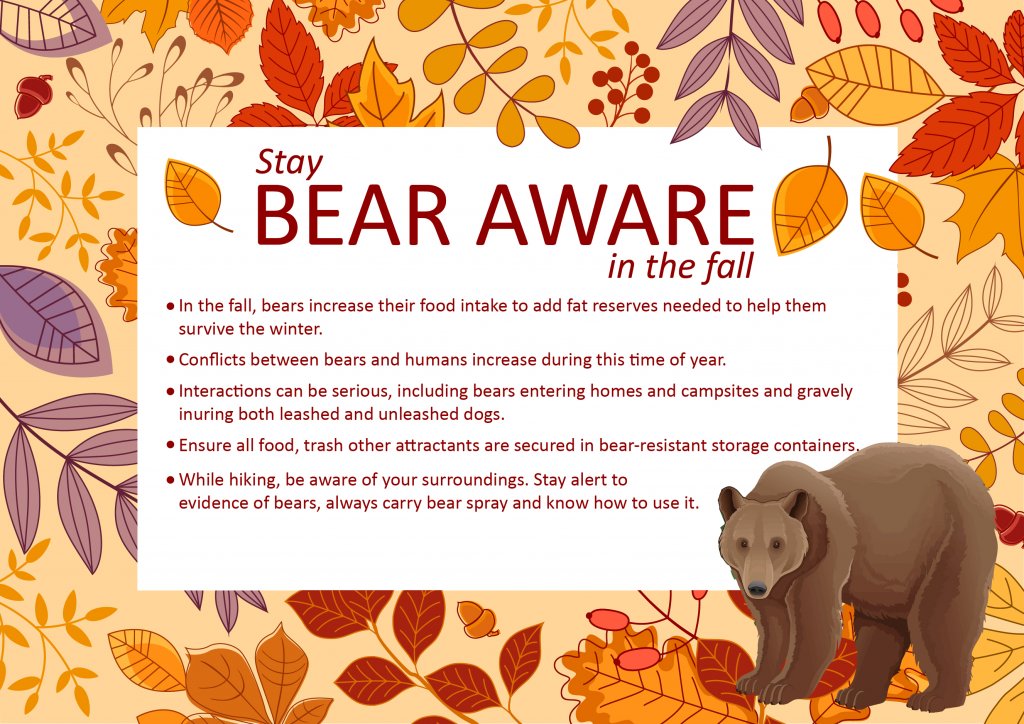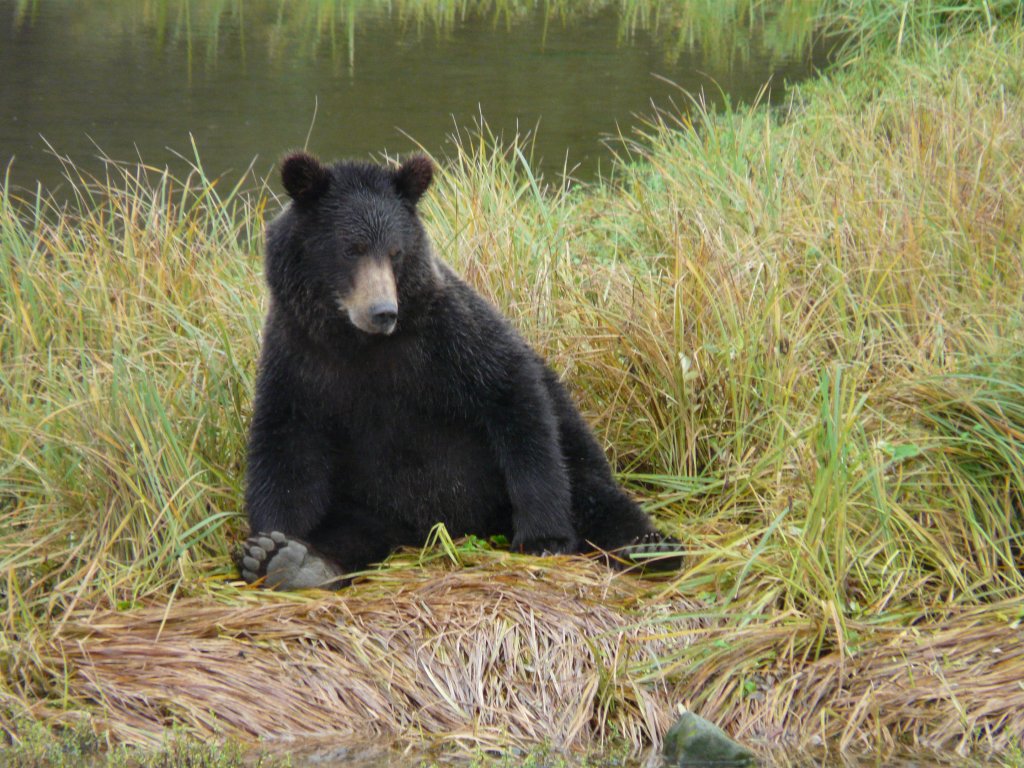Fall in Idaho is a beautiful time of year with an array of yellow, orange, and red tones painted across the hills, mountains and valleys. Add in the crisp, cool air, and fall is a prime season to head out on the trails. But please be aware that people won’t be the only ones out and about in the forest.
In the fall months, including the second half of August, black bears increase their food intake. It’s their last chance to add fat reserves needed to help them survive winter hibernation. The combination of shorter days, longer nights, and foraging bears makes the fall season a prime time for people to encounter bears in the woods, campgrounds, picnic areas or on backcountry roads.

Black bears are looking for an easy meal, including foods and snacks you may bring with you. Bears that consume human-related foods, such as food, trash, pet food, regularly become comfortable around people and food-conditioned and start associating humans with food.
If you want to avoid problems with bears, make sure there is nothing that attracts bears to your camp; even food kept in your car can be dangerous.
See this “Be Bear Aware” post from the Sawtooth National Recreation Area, where a food-storage order is in place. Read the post and watch the video to make sure you’re in compliance when visiting the Sawtooth NRA. In addition, see these bear tips from the Caribou-Targhee National Forest.
Here are the key Bear Aware tips to keep you and yours safe this fall.
When Camping…
- Use bear-proof containers for food and trash, meaning containers that seal or lock. Bear-proof canisters are a good option for backpackers. Coolers and dry boxes work well for car camping.
- Keep a clean camp; bears are attracted to odors of all kinds and will investigate anything in hopes of finding food.
- Keep a clean tent, don’t bring anything with an odor into your tent, including all foods, beverages, scented toiletries, toothpaste, gum, and insect repellant.
When Hiking…
- To reduce your chance of coming upon a bear, travel in a group and make noise or carry something that makes noise.
- Carry and know how to use bear spray, available at many outdoor retailers. Carry the bear spray on your belt so it’s easily accessible. Wait until the bear is about 12 feet away before pressing the trigger. Make it count!
If you do come across a bear…
- DO NOT RUN.
- Remain calm.
- Group together and pick up small children.
- Continue to face the bear and back away slowly, talking calmly to identify yourself as a human.
- If the bear continues to approach, try to scare it away by making yourself as large and imposing as possible by stretching your arms overhead and making loud noises.
- If the bear continues to charge, use your bear spray and spray the bear in the face.
– Kathleen Gorby, Public Affairs Officer, Caribou-Targhee National Forest
Photos courtesy USDA Forest Service Flickr. Thanks to Your Alberta for the YouTube video on how to use bear spray.


